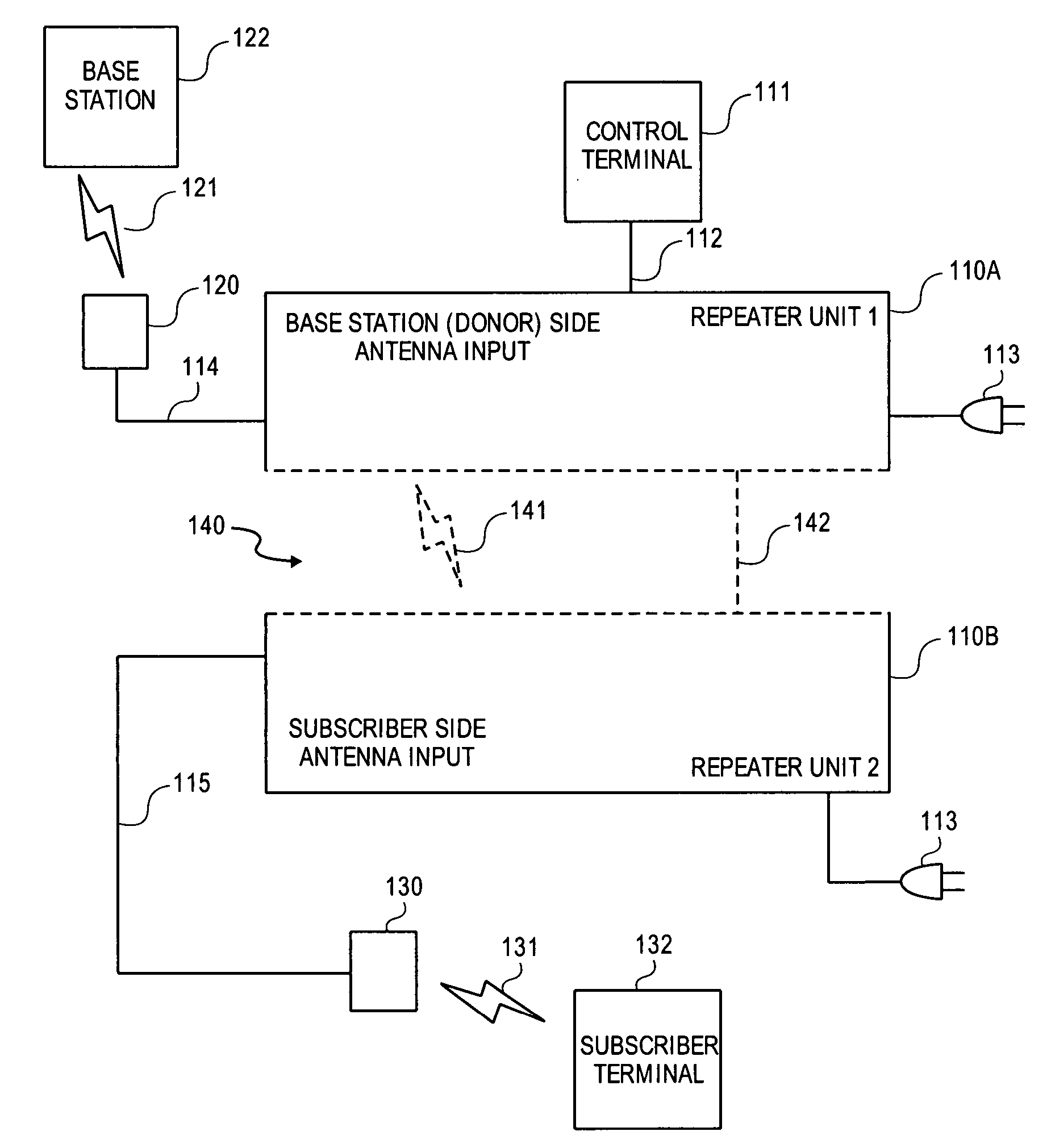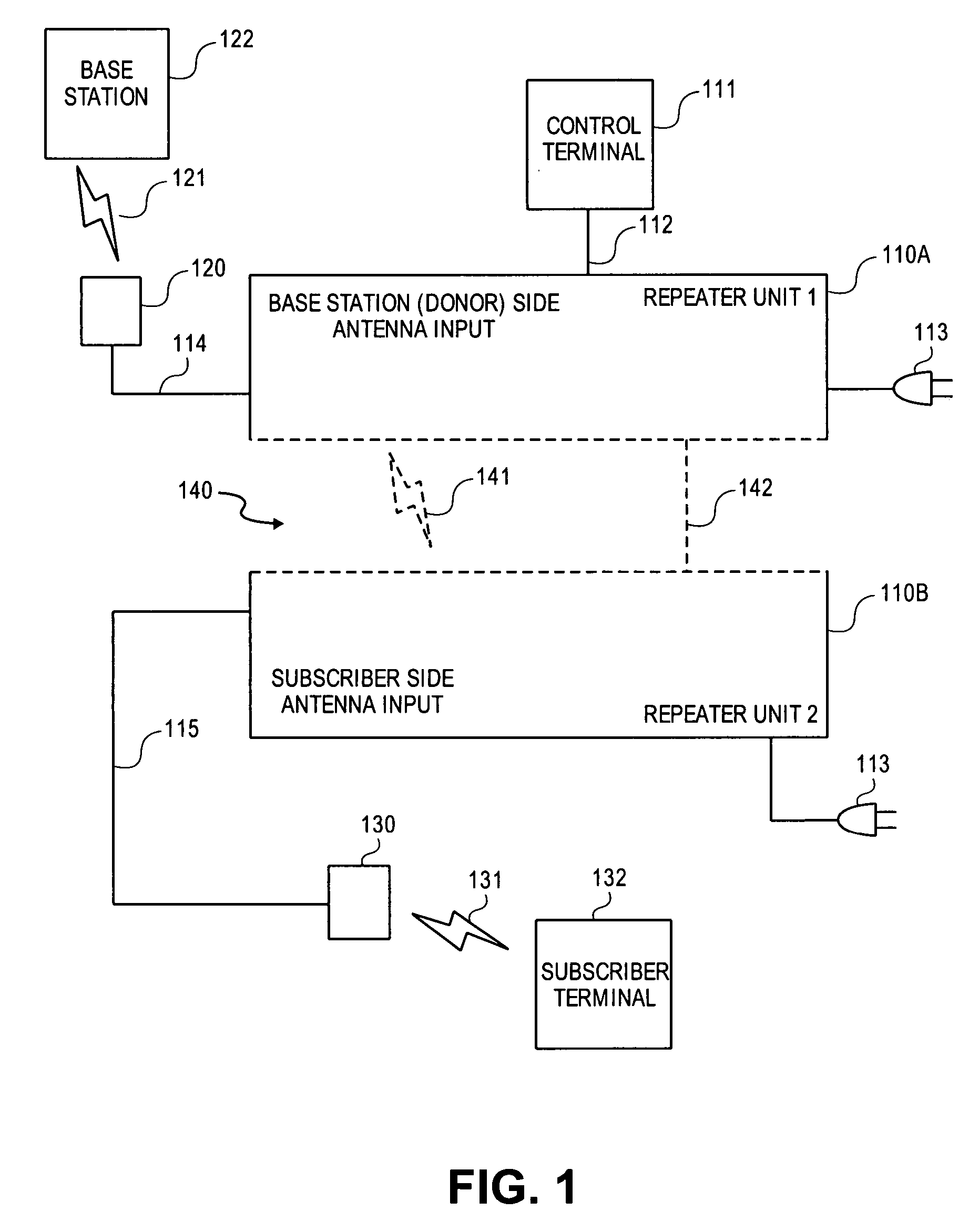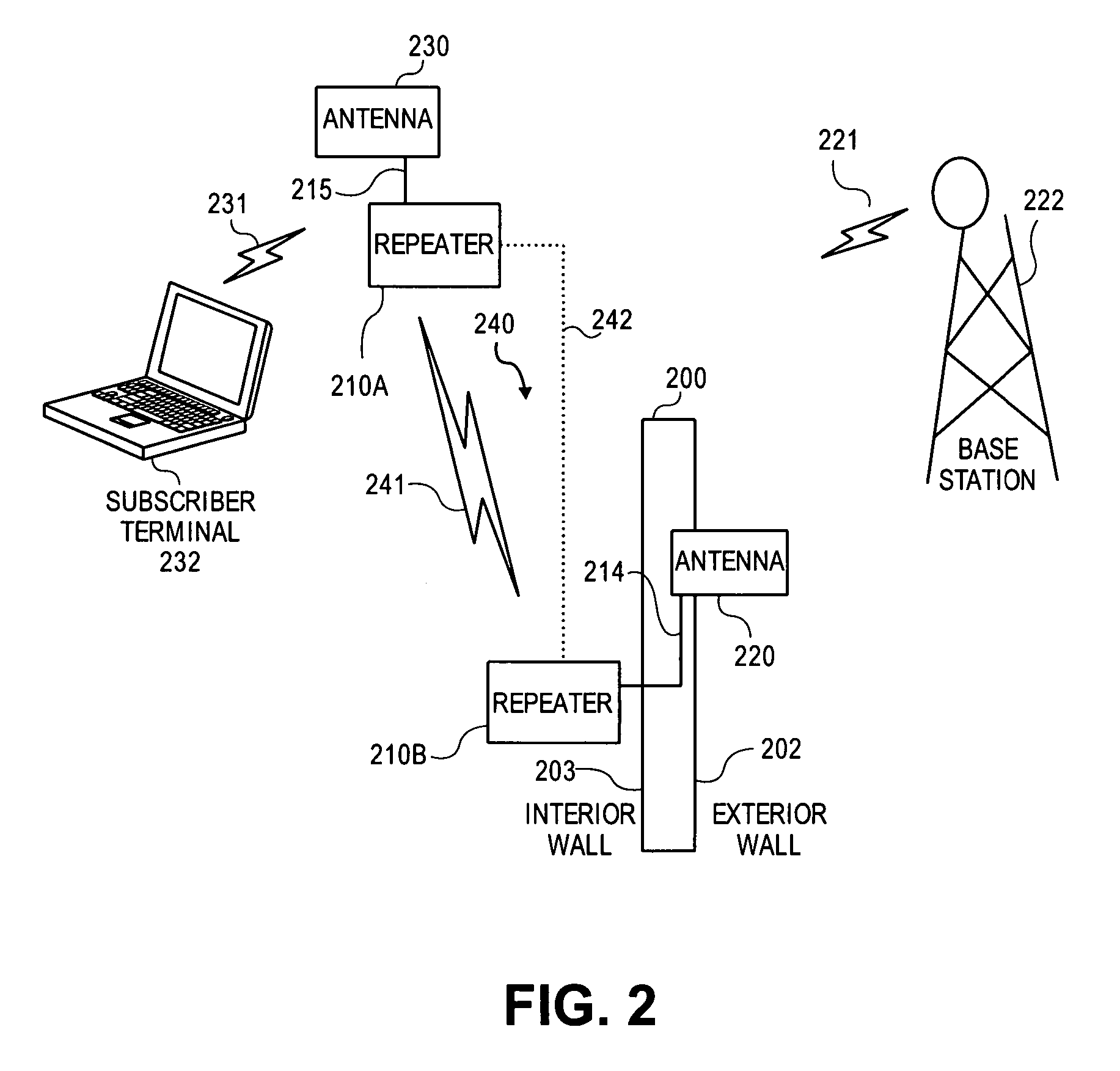Enhanced physical layer repeater for operation in WiMAX systems
a repeater and physical layer technology, applied in the field of wireless networks, can solve the problems of preventing adequate coverage, affecting the operational range of the protocol itself, and challenging realization of performance levels,
- Summary
- Abstract
- Description
- Claims
- Application Information
AI Technical Summary
Benefits of technology
Problems solved by technology
Method used
Image
Examples
Embodiment Construction
[0022] In accordance with various embodiments, a method is disclosed for repeating a signal transmitted from a first station such as a base station (BS) to a second station such as a subscriber station (SS) using a repeater configured according to a Time Division Duplex (TDD) protocol. The first station generally communicates to the second station on a downlink and the second station communicates to the first station on an uplink. The presence of the signal can be detected on the uplink or the downlink depending for example on whether the signal originates from the BS or SS using a power detector, correlator, matched filter or the like. One or more gaps between an uplink interval and a downlink interval can also be detected using a windowing function. The repeater can be synchronized to one or more time intervals associated with the detected signal that are measured during an observation period. The length of the observation period depends on factors such as the degree of accuracy r...
PUM
 Login to View More
Login to View More Abstract
Description
Claims
Application Information
 Login to View More
Login to View More - R&D
- Intellectual Property
- Life Sciences
- Materials
- Tech Scout
- Unparalleled Data Quality
- Higher Quality Content
- 60% Fewer Hallucinations
Browse by: Latest US Patents, China's latest patents, Technical Efficacy Thesaurus, Application Domain, Technology Topic, Popular Technical Reports.
© 2025 PatSnap. All rights reserved.Legal|Privacy policy|Modern Slavery Act Transparency Statement|Sitemap|About US| Contact US: help@patsnap.com



